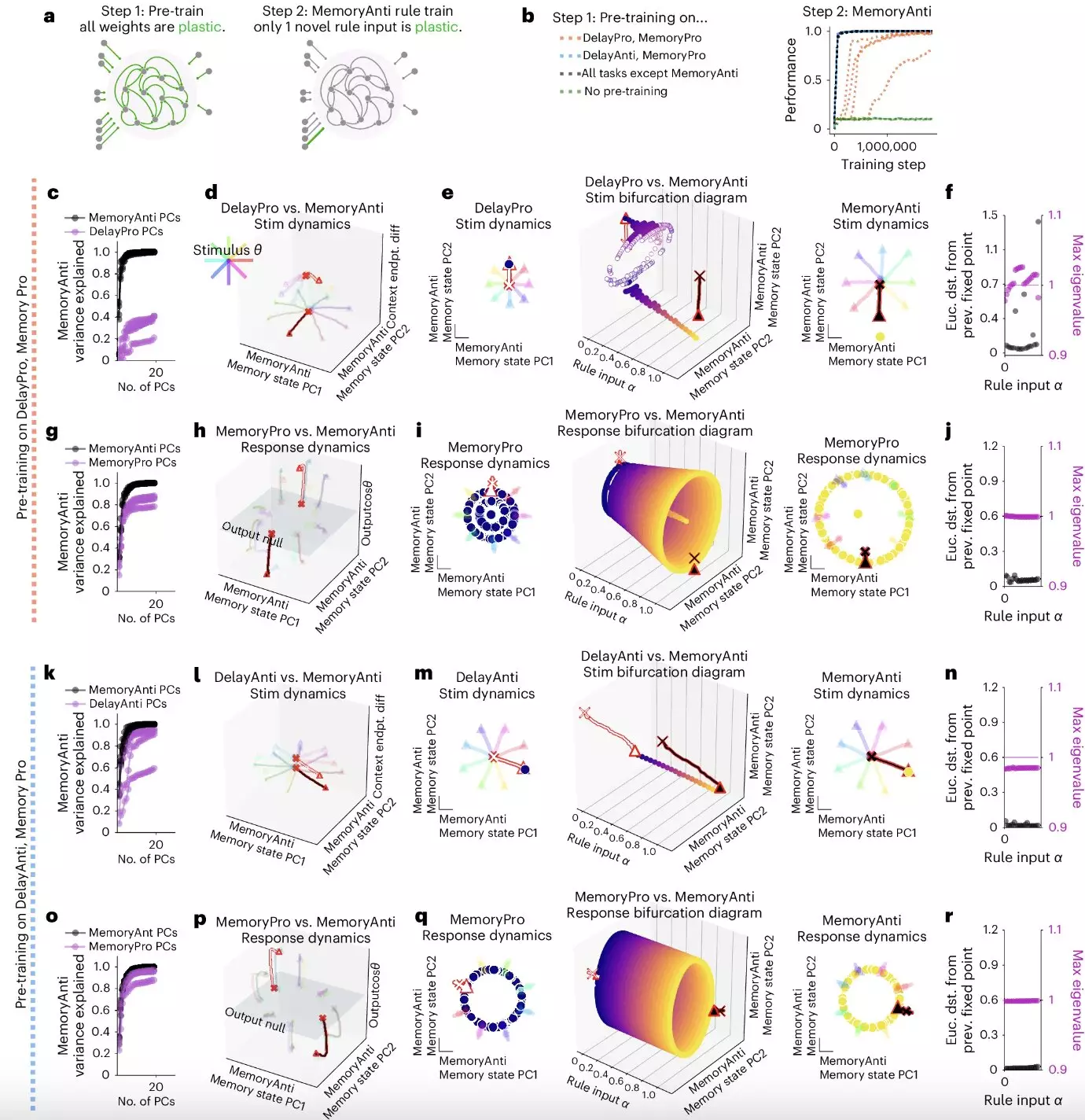The concept of cognitive flexibility, which refers to the ability to swiftly switch between different thoughts and mental concepts, is a critical human capability. This capacity enables individuals to engage in multitasking, effortlessly acquire new skills, and adapt to unfamiliar situations. While artificial intelligence (AI) systems have made significant advancements in recent years, they have not yet reached the same level of cognitive flexibility as humans when it comes to learning new skills and transitioning between tasks.
A recent study conducted by a team of researchers from New York University, Columbia University, and Stanford University sought to address the limitations of AI systems in terms of cognitive flexibility. The researchers trained a single neural network to perform 20 different tasks, with the aim of understanding how these networks can engage in modular computations to tackle a variety of tasks.
The study focused on identifying the mechanisms that facilitate computations in recurrently connected artificial neural networks. Through their research, the team identified a computational substrate within these networks that enables modular computations, which they referred to as “dynamical motifs.” These motifs are recurring patterns of neural activity that implement specific computations through dynamics, such as attractors, decision boundaries, and rotations.
Implications for Artificial Intelligence
The researchers found that in convolutional neural networks, dynamical motifs are implemented by clusters of units when the unit activation function is constrained to be positive. Additionally, lesions to these units were shown to negatively impact the networks’ ability to perform modular computations. The study also revealed that these motifs could be reconfigured for fast transfer learning after an initial phase of learning, highlighting their importance in facilitating task-switching abilities in AI systems.
Future Directions
The findings of this study have significant implications for both neuroscience and computer science research. By understanding the neural substrates that underlie cognitive flexibility and multitasking abilities, researchers can develop new strategies to emulate these processes in artificial neural networks. Ultimately, this could lead to advancements in AI systems that exhibit a higher degree of cognitive flexibility and adaptability, bringing them closer to the capabilities of the human brain.
The study conducted by Driscoll, Shenoy, and Sussillo provides valuable insights into the neural mechanisms that support modular computation in AI systems. By uncovering the role of dynamical motifs in enabling multitasking abilities, the researchers have opened up new avenues for future research in the field of artificial intelligence. This work has the potential to revolutionize the way AI systems are designed and developed, ultimately leading to more intelligent and adaptable machines.

